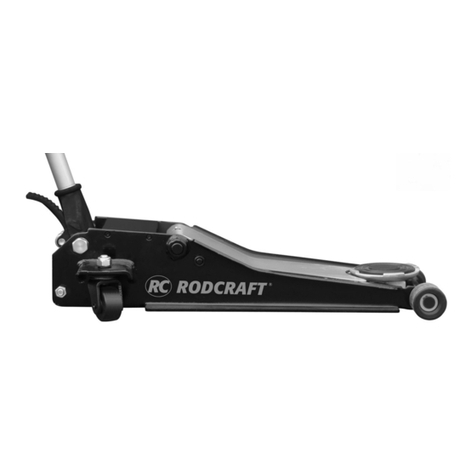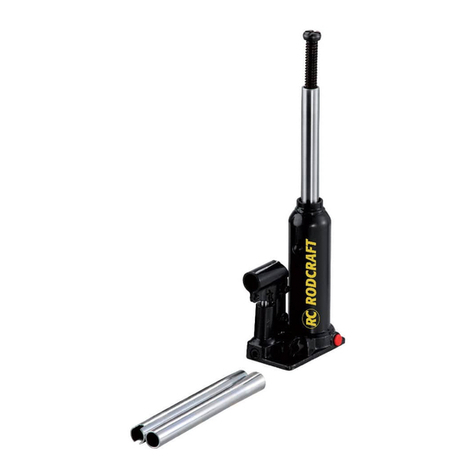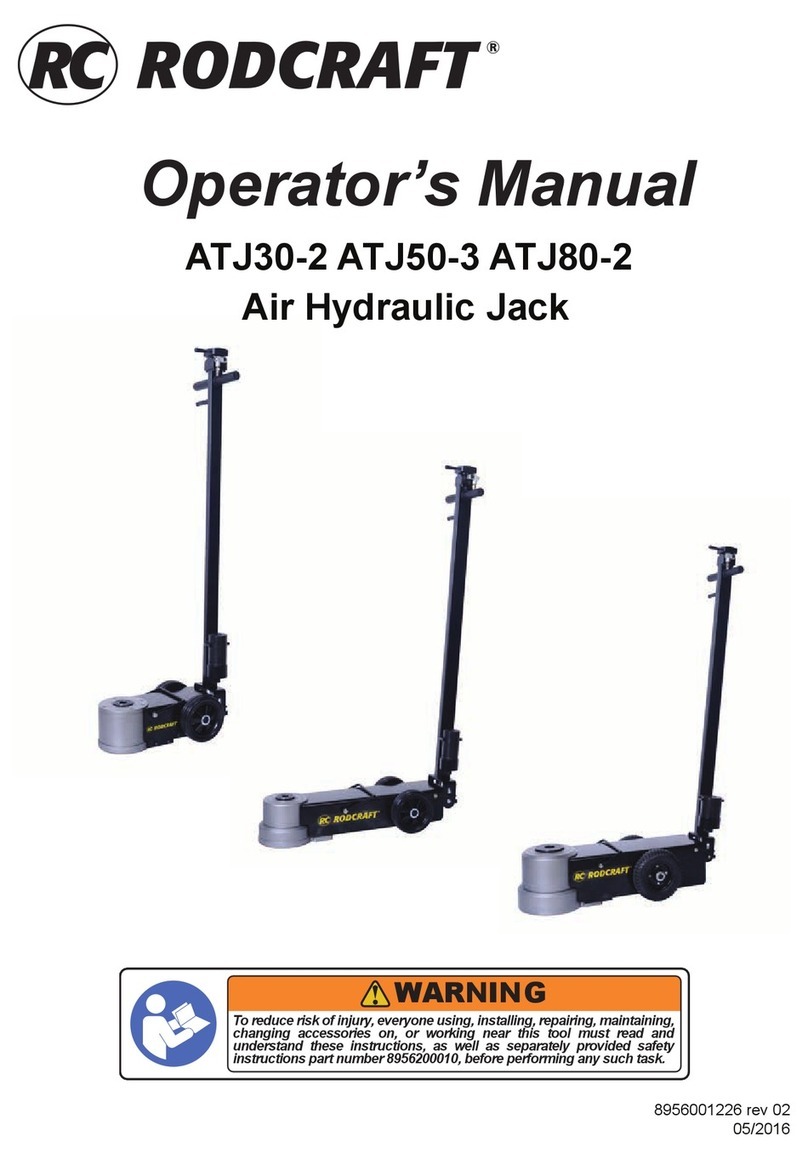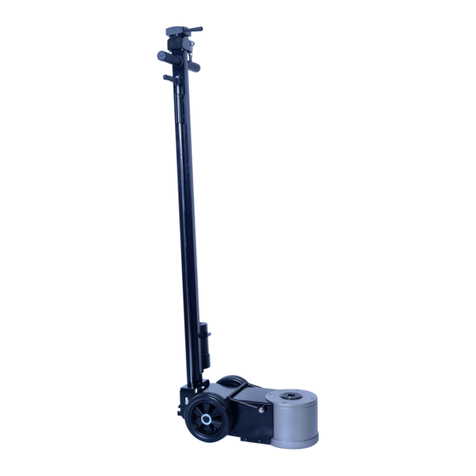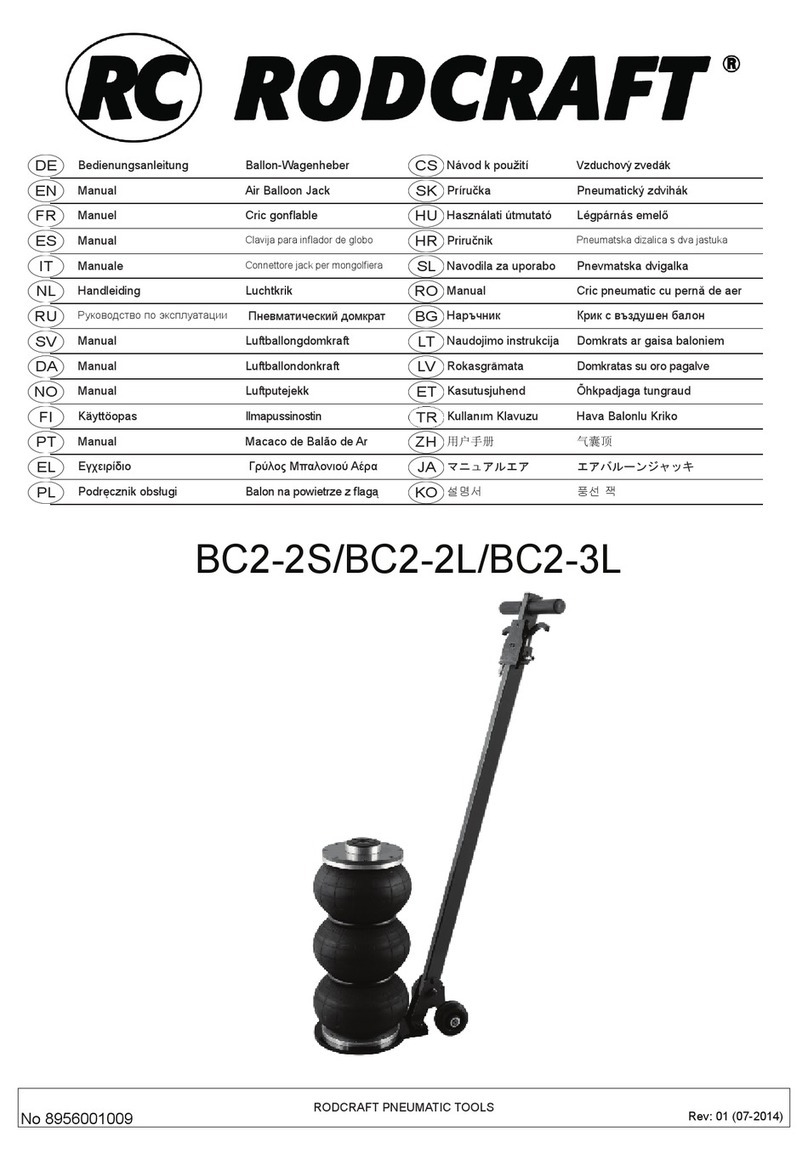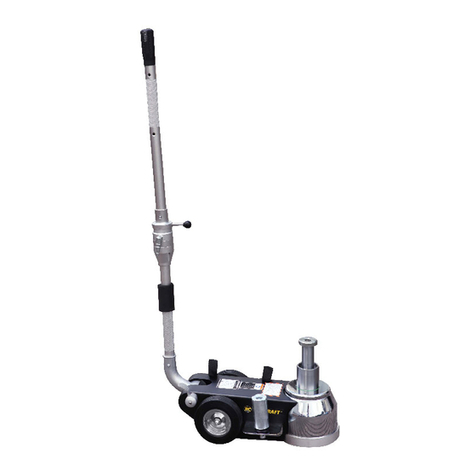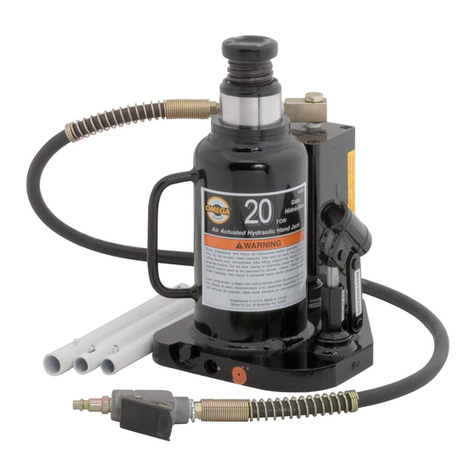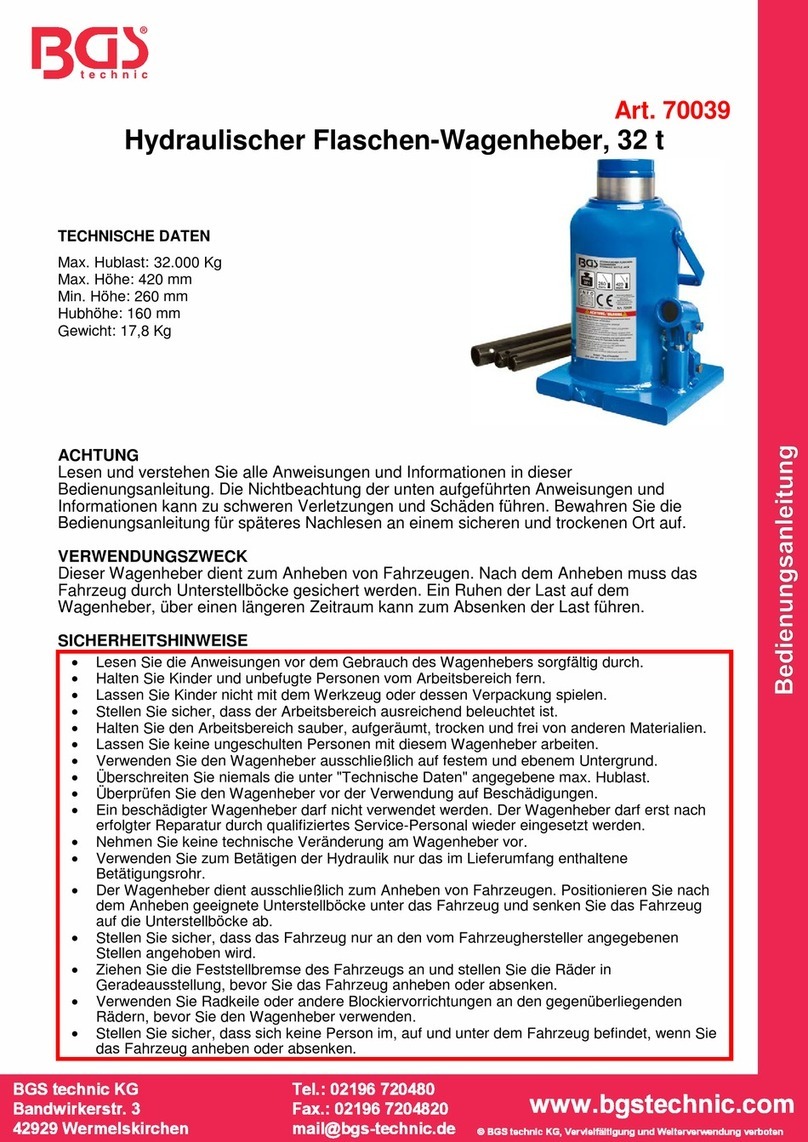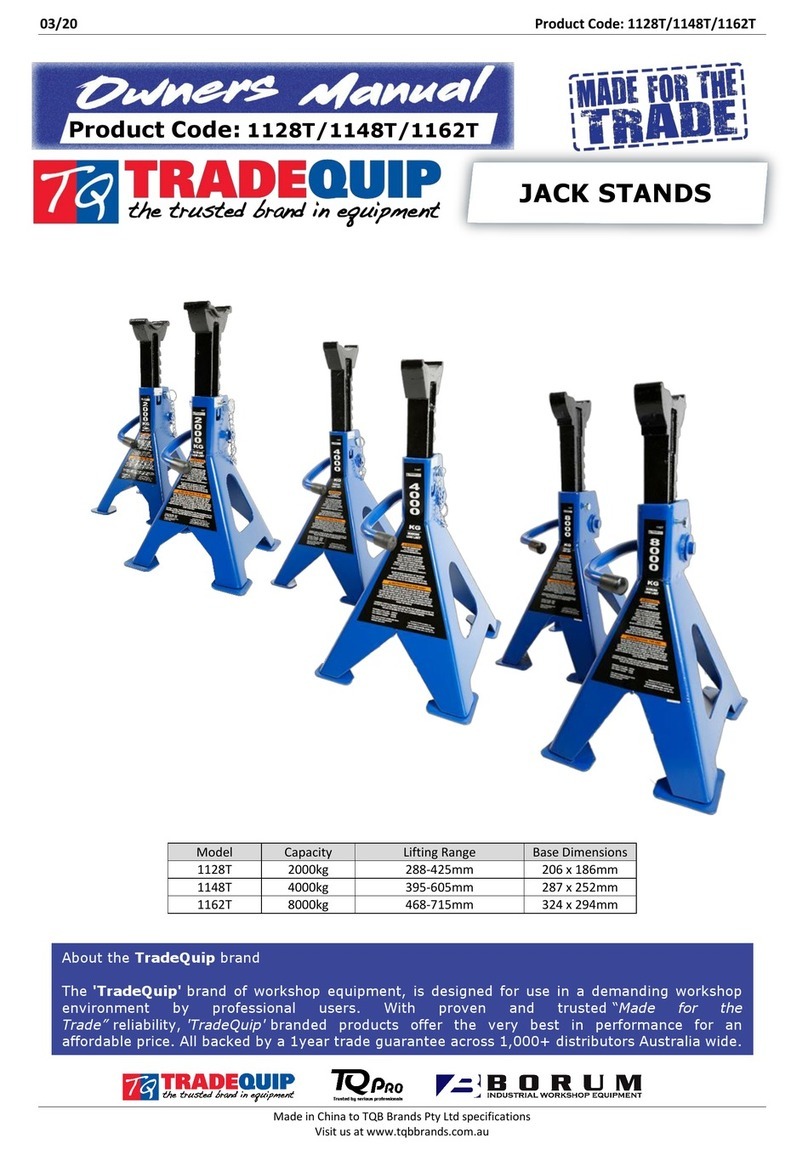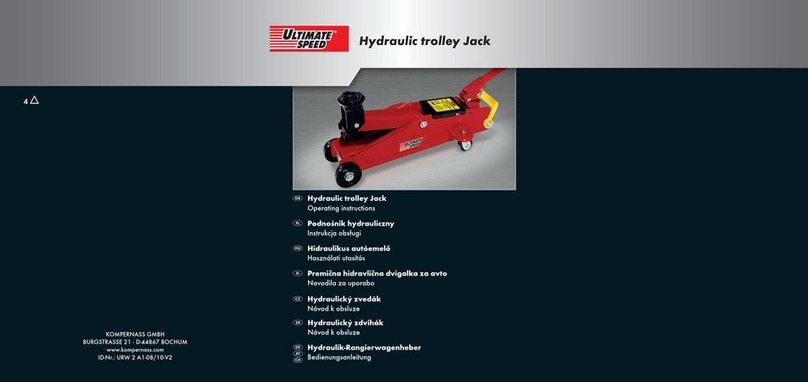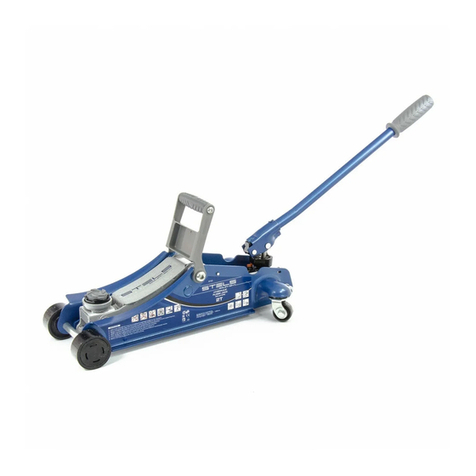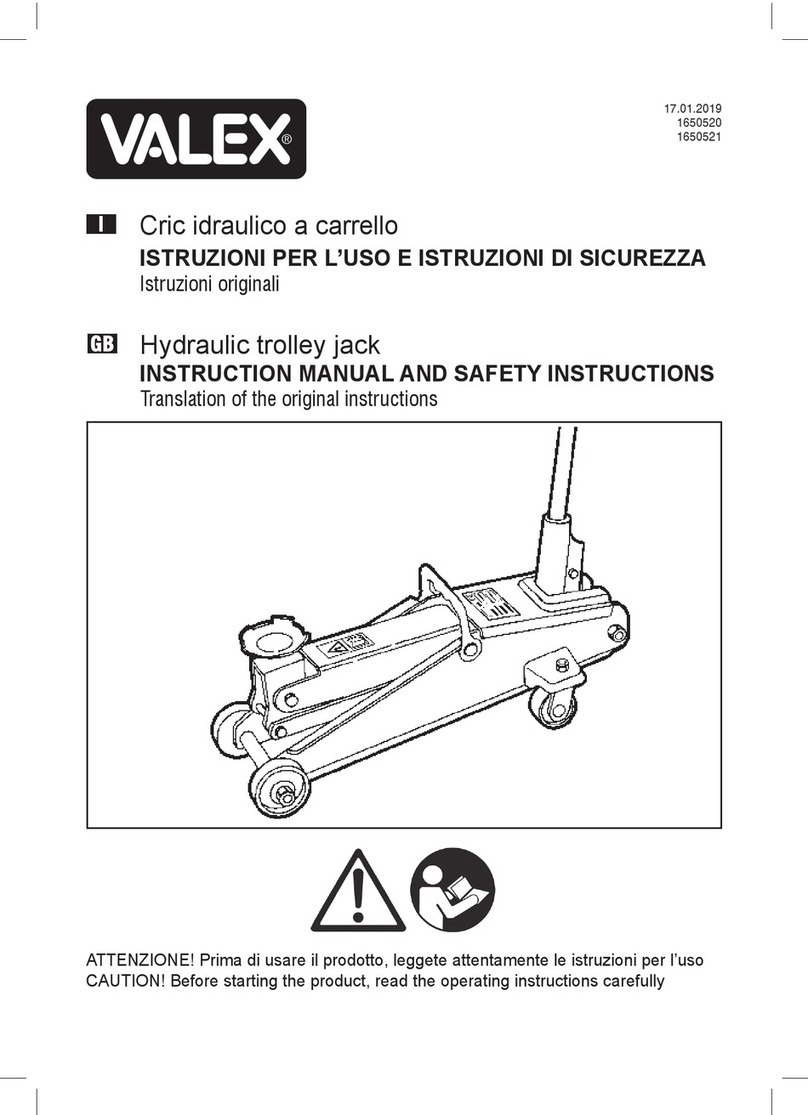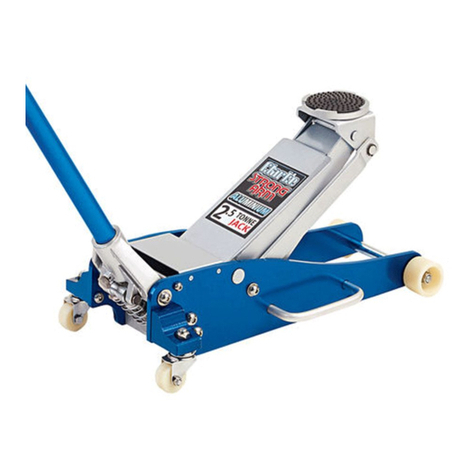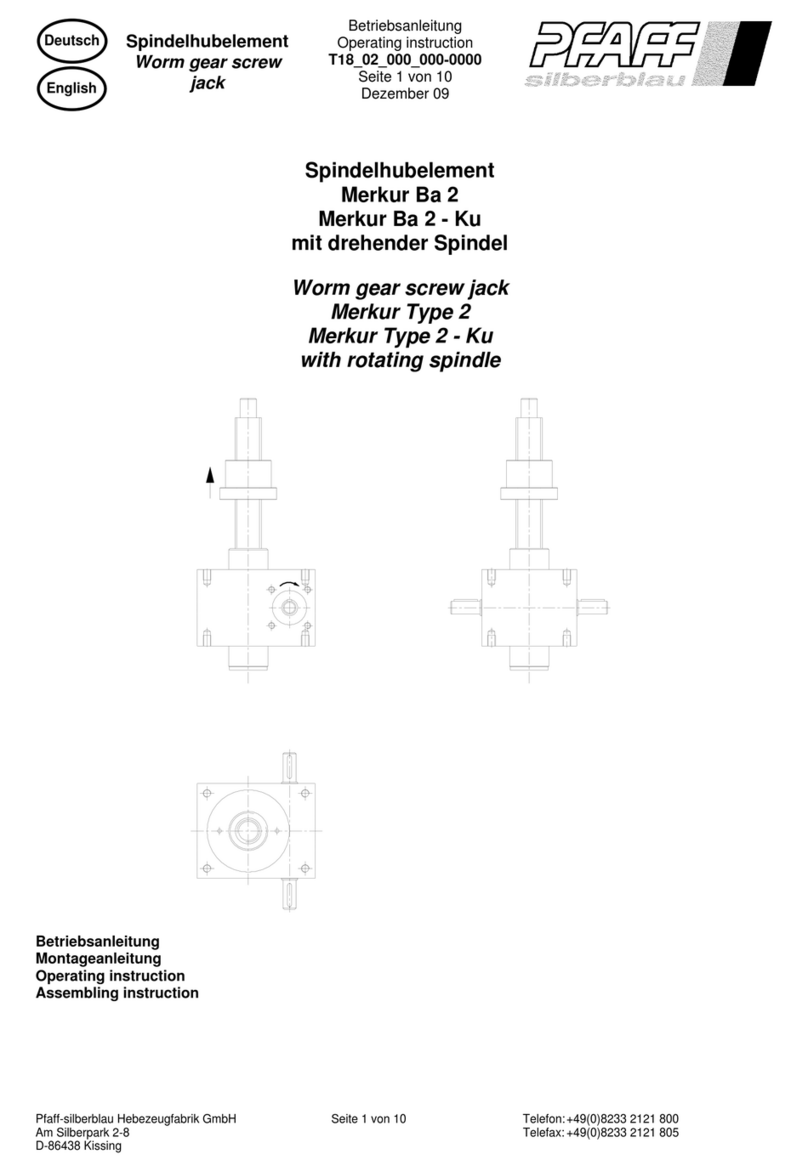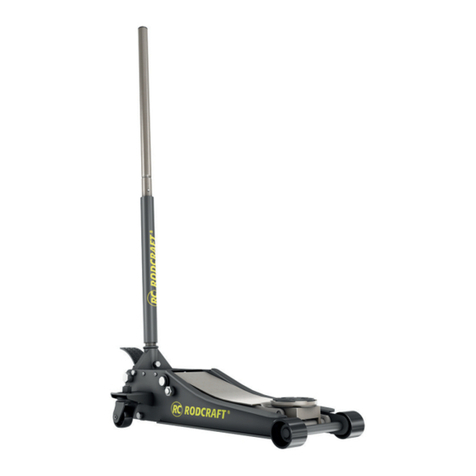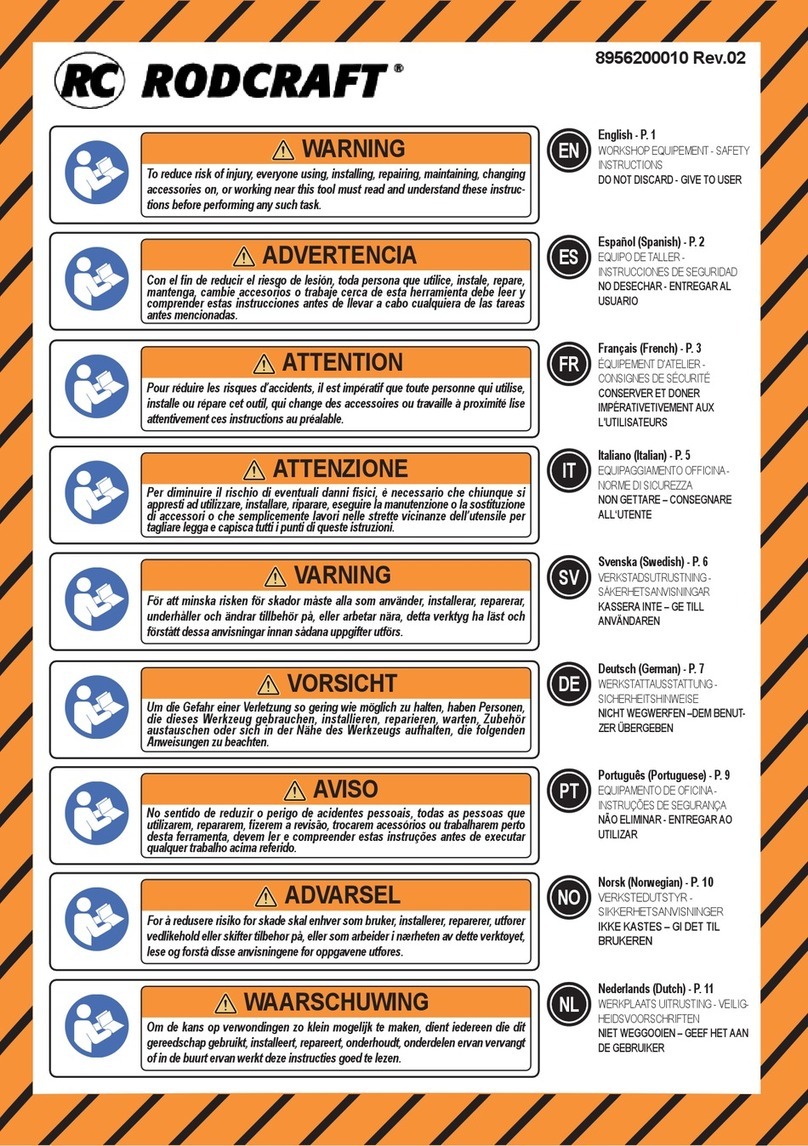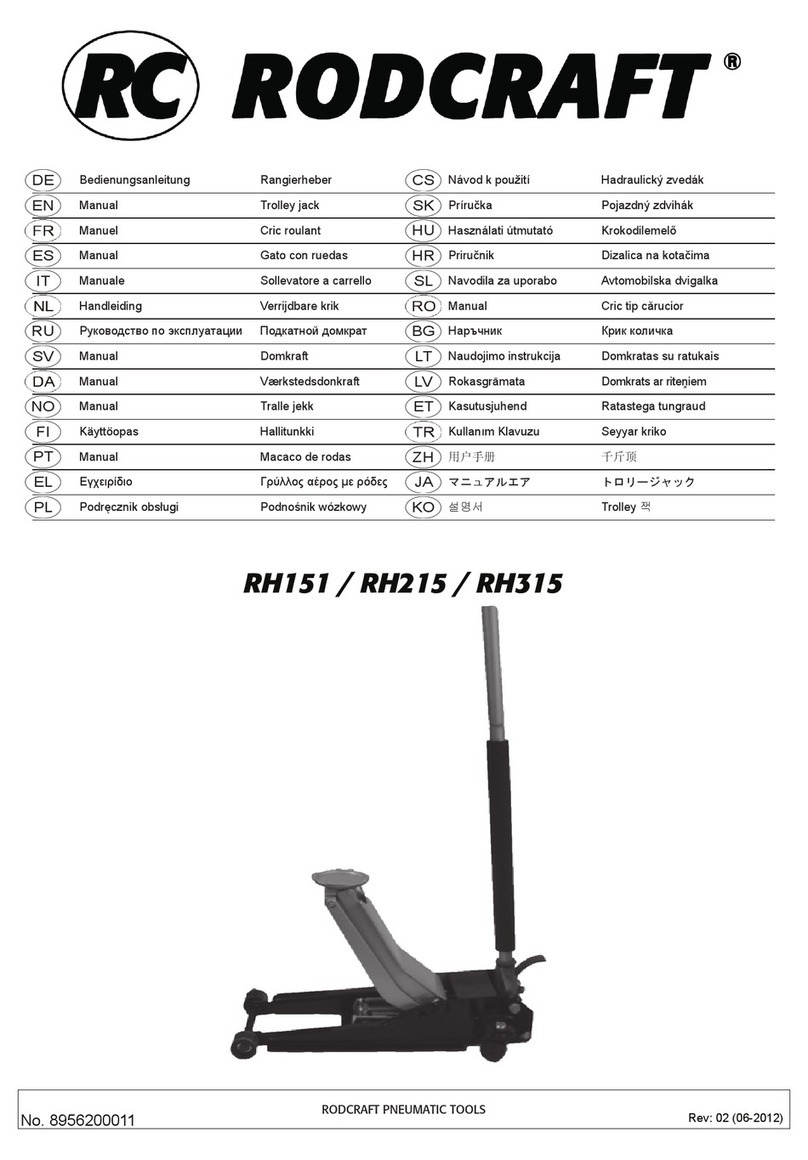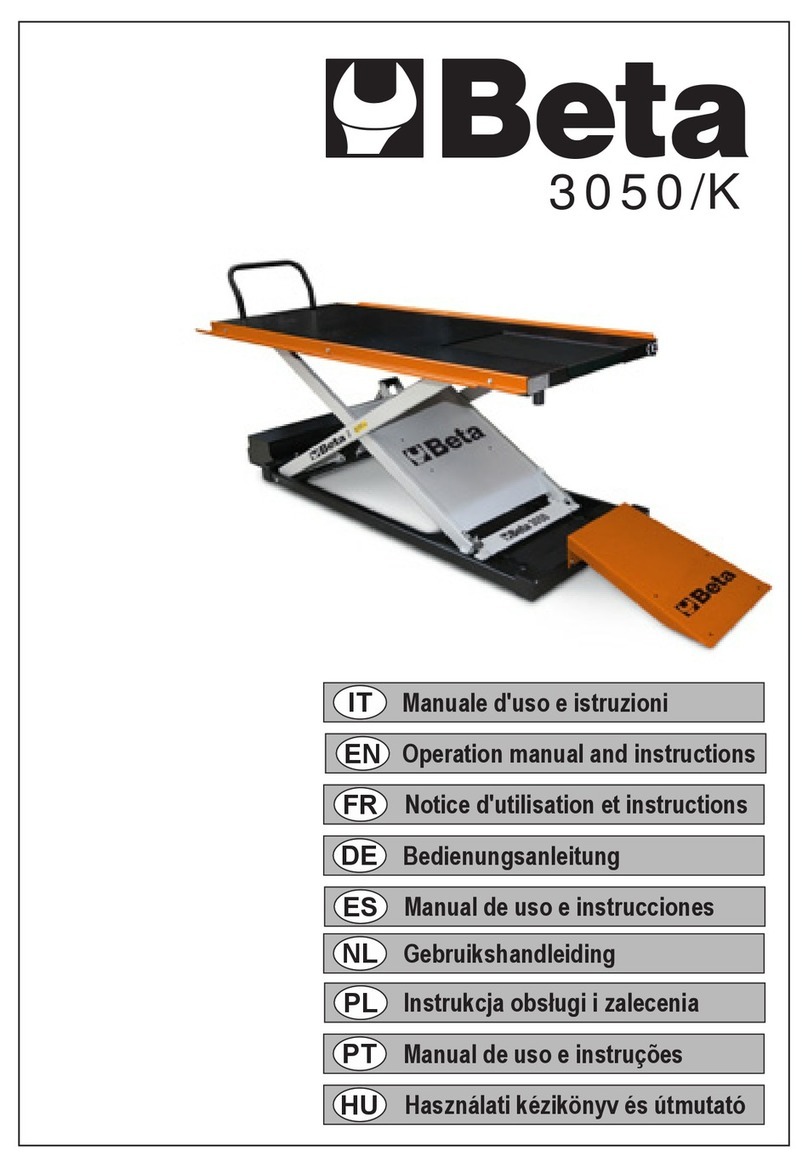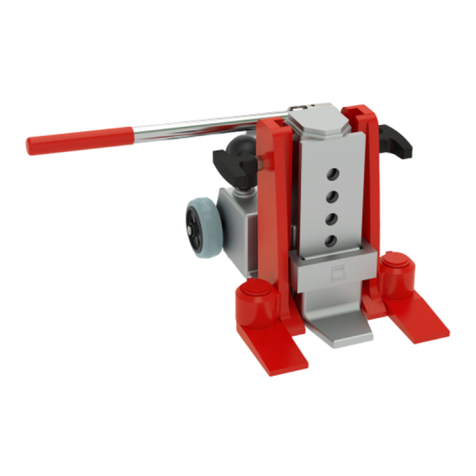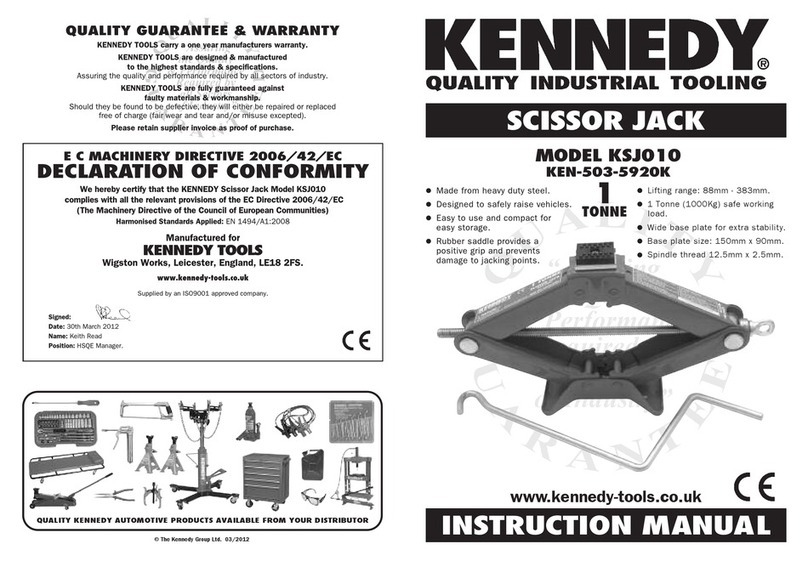
DE Deutsch ATJ30-1H
Luft-Hydraulik-Hubwagen
6. Fehlersuche
Fehler Ursache Behebung
A
oder ohne Last nicht heraus.
2. Ölmangel im Hydraulikkolben
3. Störung der Pneumatikpumpe
1.a Die Druckluftversorgung muss den Angaben in
der Anleitung und dem Typenschild auf dem Produkt
entsprechen.
2.b Störung im Hydrauliksystem, Produkt muss von einem
3. Produkt muss von einer autorisierten Werkstatt
repariert werden
BDer Hydraulikkolben erreicht
nicht die maximale Position. Ölmangel im Hydraulikkolben
CDer Hydraulikkolben verbleibt
nicht in der oberen Stellung.
1. Ölleck am Hydraulikkolben
2. Störung der Pneumatikpumpe
autorisierte Werkstatt zur Reparatur schicken
2. Produkt muss von einer autorisierten Werkstatt
repariert werden
D
2. Störung der Pneumatikpumpe
3. Druckluftverlust an der Staubdichtung
1.a SDie Druckluftversorgung muss den Angaben in
der Anleitung und dem Typenschild auf dem Produkt
entsprechen.
2.&3. Produkt muss von einer autorisierten Werkstatt
repariert werden
5. Wartungsanweisungen
Document Ref: 8940169914_REV:01 _ 05-2012
Scale: 1:1
Caution
• Verwenden Sie keine beschädigten/deformierten Produkte. Falls ungewöhnliche Geräusche oder Vibrationen
auftreten, beenden Sie sofort die Nutzung. Führen Sie dann eine Überprüfung durch und bitten Sie den Hersteller
um Hilfe.Es wird empfohlen, dass diese Überprüfung durch eine vom Hersteller oder Lieferanten autorisierte
Reparaturwerkstatt erfolgt.
• Die häufigste einzelne Ursache für Ausfälle in Hydraulikaggregaten ist Schmutz. Halten
Sie den Hubwagen sauber und gut geschmiert, damit keine Fremdkörper in das System eindringen können. Wenn
der Hubwagen Regen, Schnee, Sand oder Splitt ausgesetzt war, muss er vor der nächsten Verwendung gereinigt
werden.
•
•
• Lagern Sie das Produkt an einem trockenen und nicht korrosiven Umgebung.
•
an.
•
VERWENDET WERDEN, BIS ES REPARIERT IST. Es wird empfohlen, dass die notwendigen Reparaturen durch eine vom Hersteller oder Lieferanten
autorisierte Reparaturwerkstatt erfolgt, falls Reparaturen vom Hersteller oder Lieferanten erlaubt werden.
•
7. EG-KONFORMITÄTSERKLÄRUNG
Wir: Rodcraft Customer Center Langemarckstr.35 bis 45141 Essen- Germany
Erklären hiermit, dass das (die) Produkt(e): ATJ30-1H Serial Number: 001 - 999
Typ(en): Luft-Hydraulik-Hubwagen Produktherkunft: China
den Anforderungen der EG-Richtlinie zur Angleichung der Rechtsvorschriften der Mitgliedsstaaten entspricht: für “Maschinen” 2006/42/EC
(17/05/2006)
Geltende harmonisierte Norme(n): EN 1494:2000 + A1:2008
Name und Position des Ausstellers: Pascal Roussy ( R&D Manager)
Ort und Datum: Saint-Herblain, 13/11/2017
Technische Datei bei EU-Hauptbüro erhältlich. Pascal Roussy, R&D manager CP Technocenter 38, rue Bobby Sands - BP10273 44800 Saint Herblain -
France
Copyright 2017, Rodcraft
Produkthaftung nicht abgedeckt.
